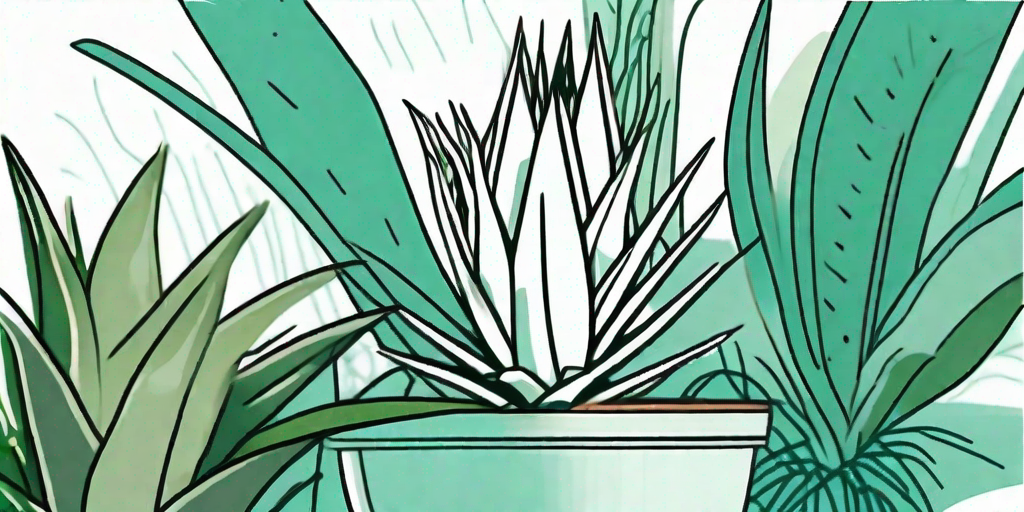
If you're a plant lover, you're likely no stranger to the joy of raising bromeliads. These tropical beauties are known for their vibrant colors and unique growth patterns. But did you know that bromeliads can have babies, too? Yes, you read that right! Bromeliads produce offspring, known as 'pups', which can be separated and grown into new plants. In this guide, we'll explore the fascinating world of bromeliad propagation and share some cheeky tips for raising your bromeliad babies.
Understanding Bromeliad Pups
Before we dive into the nitty-gritty of bromeliad propagation, let's first understand what bromeliad pups are. Bromeliad pups are the offspring that a mature bromeliad plant produces. They grow from the base of the mother plant and can be separated once they reach a certain size. It's like a bromeliad's way of saying, "Hey, I'm a grandparent now!"
But why do bromeliads produce pups? Well, it's their survival strategy. Bromeliads are monocarpic, which means they die after flowering. But before they do, they produce pups to ensure their lineage continues. It's like a bromeliad's version of a will, leaving behind a little piece of themselves for the future.
Identifying Bromeliad Pups
Identifying bromeliad pups is pretty straightforward. They usually appear at the base of the mother plant after it has flowered. They look like mini versions of the parent plant, complete with their own leaves. It's like a bromeliad's version of a mini-me!
However, don't rush to separate the pups as soon as you see them. They need to reach a certain size before they can survive on their own. A good rule of thumb is to wait until the pup is at least one-third the size of the mother plant. Patience is key here, folks!
How to Separate Bromeliad Pups
Now that we've covered the basics of bromeliad pups, let's move on to the exciting part - separating and growing them. This is where you get to play plant surgeon and bring new life into the world. Don't worry, it's not as scary as it sounds!
First, you'll need some basic tools - a sharp knife or pair of scissors, a pot with drainage holes, and some bromeliad or orchid mix. Make sure your tools are clean to avoid transmitting diseases to your plants. Remember, cleanliness is next to godliness, especially in plant propagation!
Step-by-Step Guide to Separating Bromeliad Pups
-
Wait until the pup is at least one-third the size of the mother plant. This ensures that it has enough energy to survive on its own.
-
Using a sharp knife or pair of scissors, carefully cut the pup away from the mother plant. Try to get as much of the pup's stem as possible.
-
Let the cut pup dry for a day or two. This allows the cut to callous over, reducing the risk of infection.
-
Plant the pup in a pot with bromeliad or orchid mix. Make sure the pot has drainage holes to prevent waterlogging.
-
Water the pup lightly and place it in a bright, indirect light. Avoid direct sunlight as it can scorch the young plant.
-
Be patient! It can take several weeks for the pup to establish roots and start growing.
Caring for Your Bromeliad Babies
Once you've successfully separated your bromeliad pups, the next step is to care for them. Just like human babies, bromeliad babies need a lot of care and attention. But don't worry, they're not as demanding as human babies. No late-night feedings or diaper changes required!
Bromeliad pups prefer bright, indirect light and high humidity. They like their soil to be well-draining and slightly acidic. Water them lightly and make sure not to let water sit in their central cup, as this can lead to rot. And just like teenagers, they appreciate a bit of feeding. A diluted liquid fertilizer every month should do the trick.
Common Problems and Solutions
While bromeliads are generally easy to care for, they can sometimes encounter problems. Here are some common issues and how to solve them:
-
Yellowing Leaves: This could be a sign of overwatering. Cut back on watering and make sure the pot has good drainage.
-
Brown Tips: This could indicate low humidity. Try misting the plant or placing it on a tray of pebbles with water.
-
Slow Growth: The plant might not be getting enough light. Move it to a brighter location, but avoid direct sunlight.
FAQs
When should I separate bromeliad pups?
You should wait until the pup is at least one-third the size of the mother plant before separating it. This ensures that it has enough energy to survive on its own.
How long does it take for a bromeliad pup to grow?
It can take several weeks for a bromeliad pup to establish roots and start growing. Patience is key!
Can I grow bromeliad pups in water?
While some people have success growing bromeliads in water, it's generally not recommended. Bromeliads prefer well-draining soil and can rot if left in standing water.
In conclusion, raising bromeliad babies can be a fun and rewarding experience. With a little patience and care, you can propagate your own bromeliad pups and expand your plant family. So go ahead, embrace your inner plant parent and start raising your bromeliad babies!















